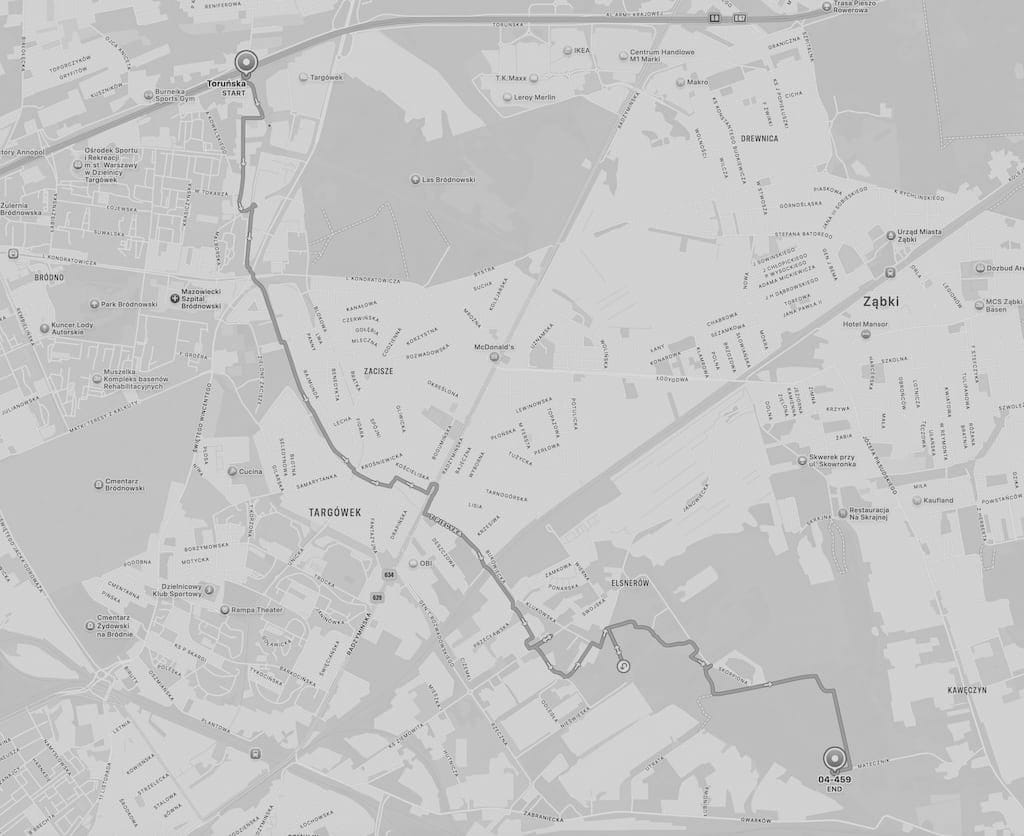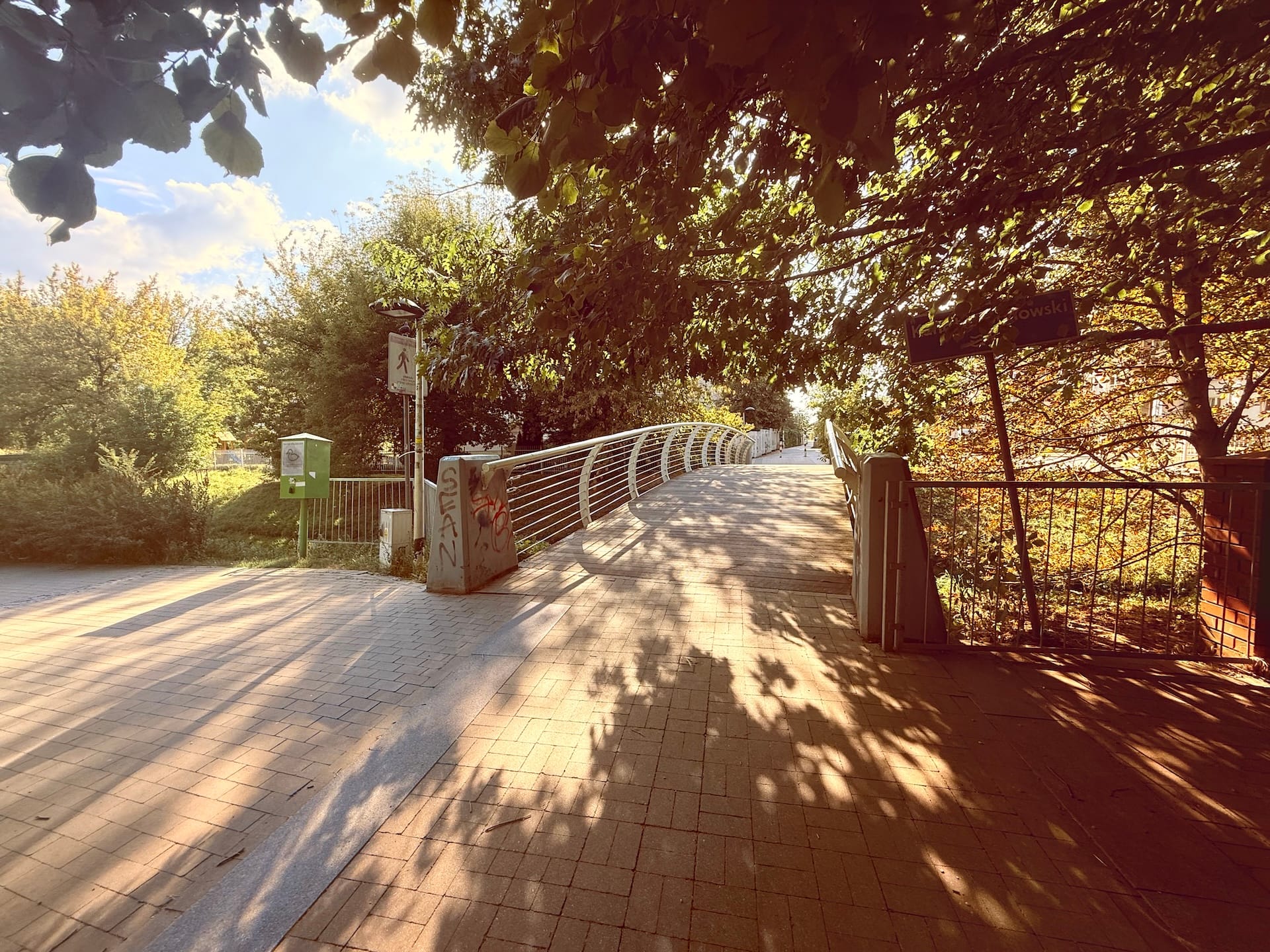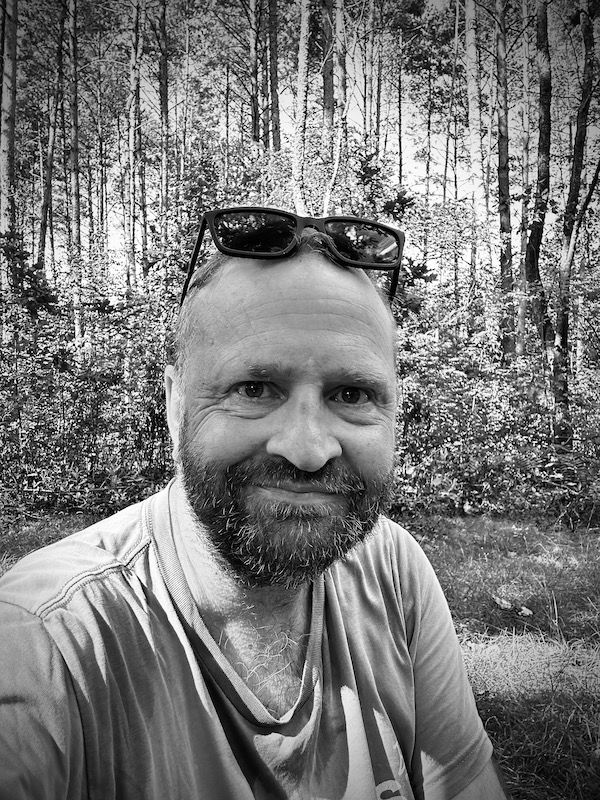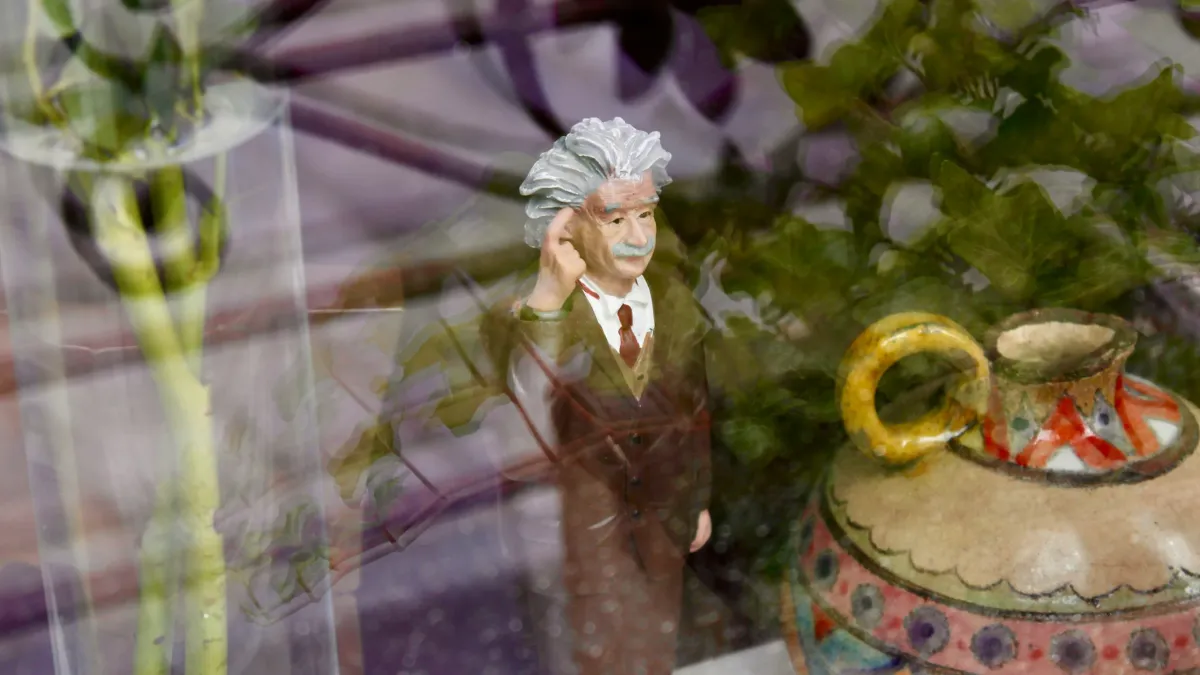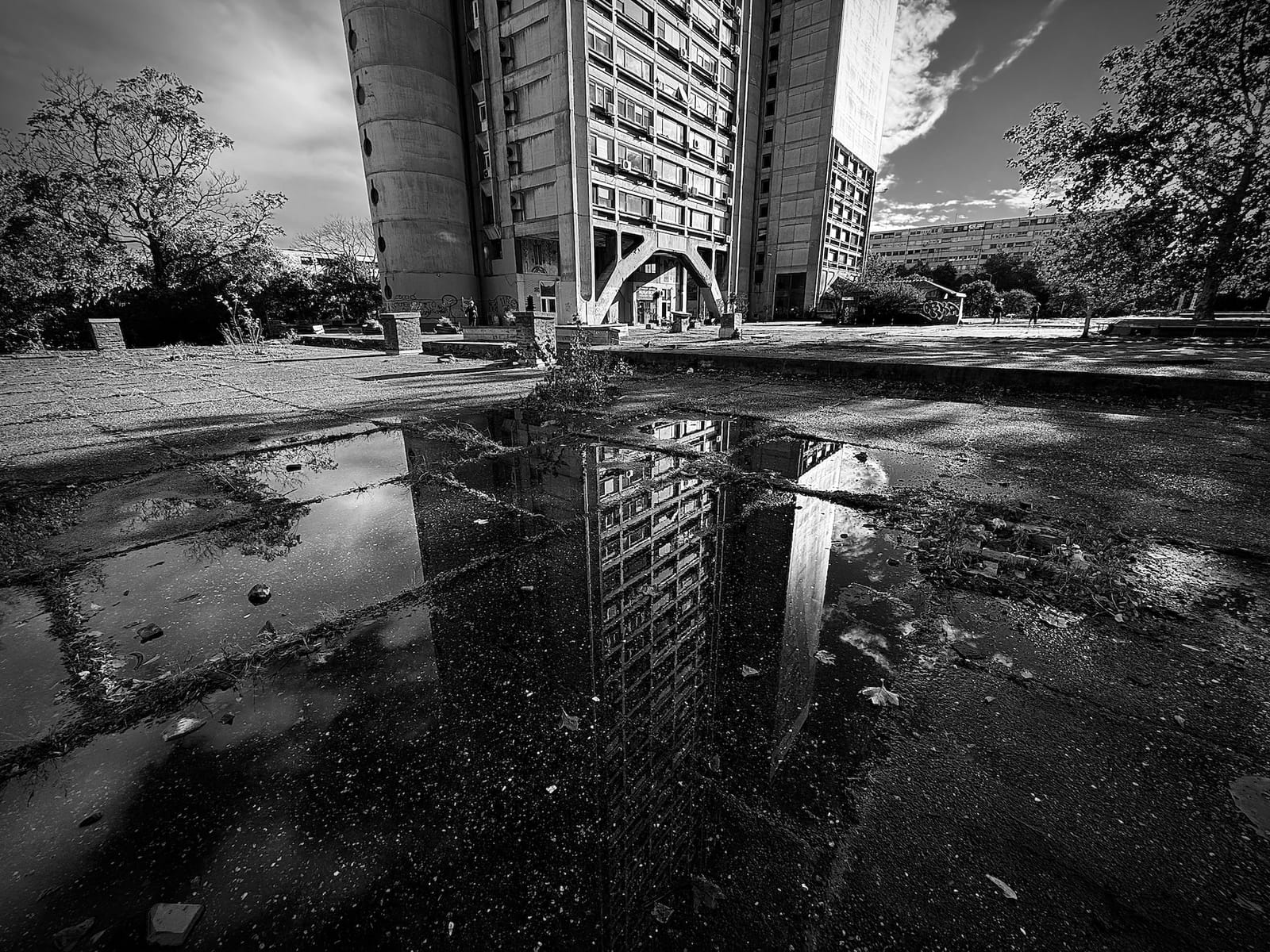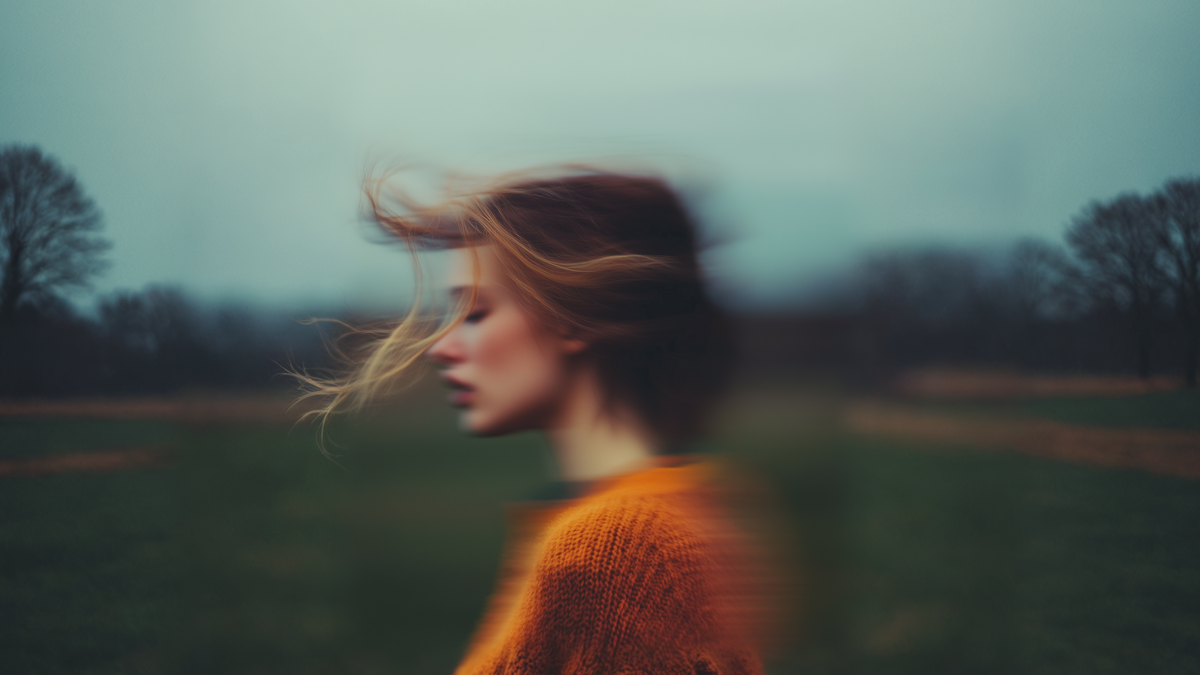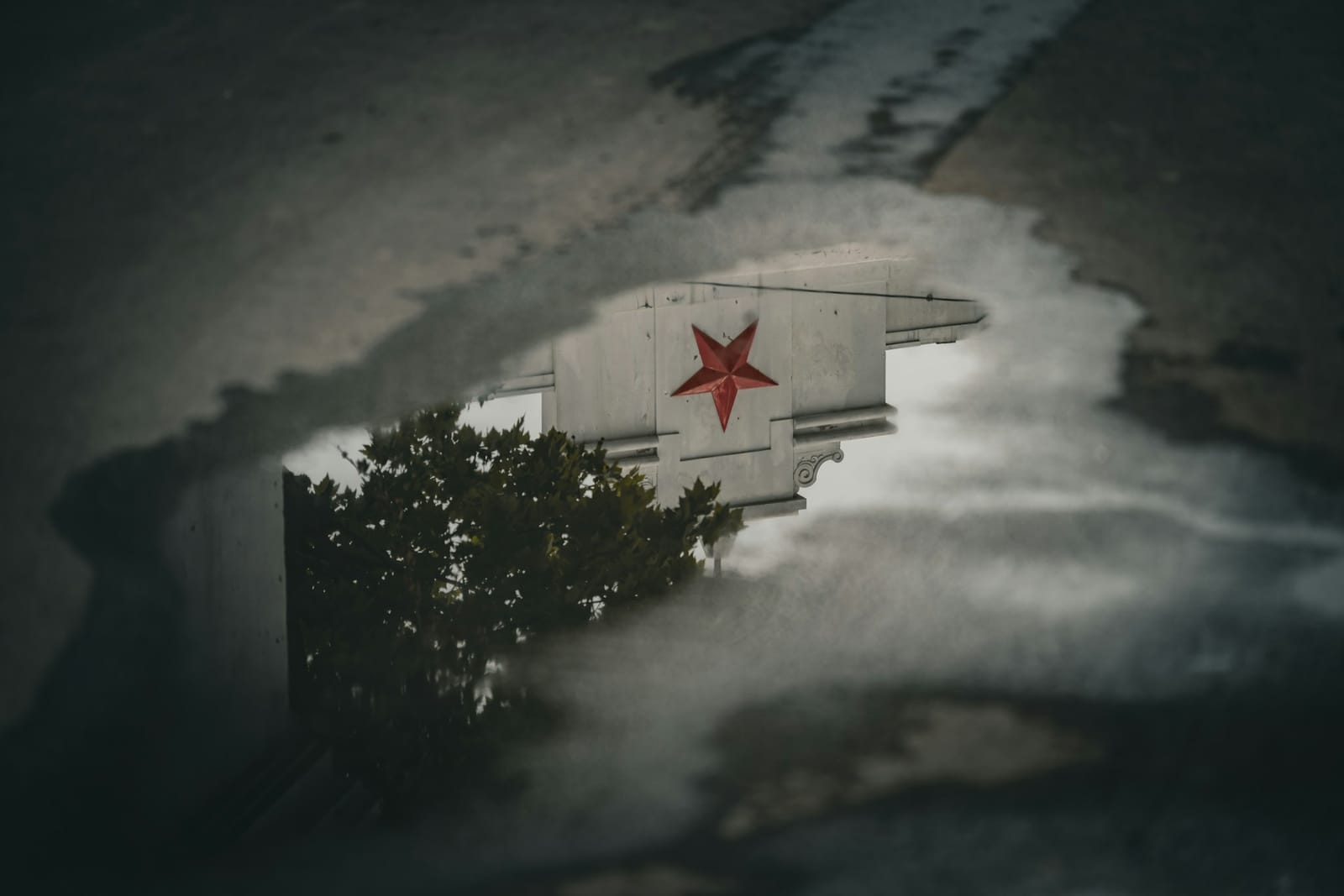There's something unexpected about discovering quietude in the middle of a city. Not the forced quiet of a library or museum, but something more elemental - the particular hush that water creates as it moves purposefully through concrete channels, carrying with it a pocket of calm that the surrounding urban chaos seems unable to penetrate.
Kanał Bródnowski cuts through Warsaw's Targówek district like a secret the city keeps from itself. Built for the practical business of flood control and drainage, it has become something unintended in its daily existence: an urban oasis, a corridor of contemplation that runs parallel to the city's hurried rhythms without quite participating in them.
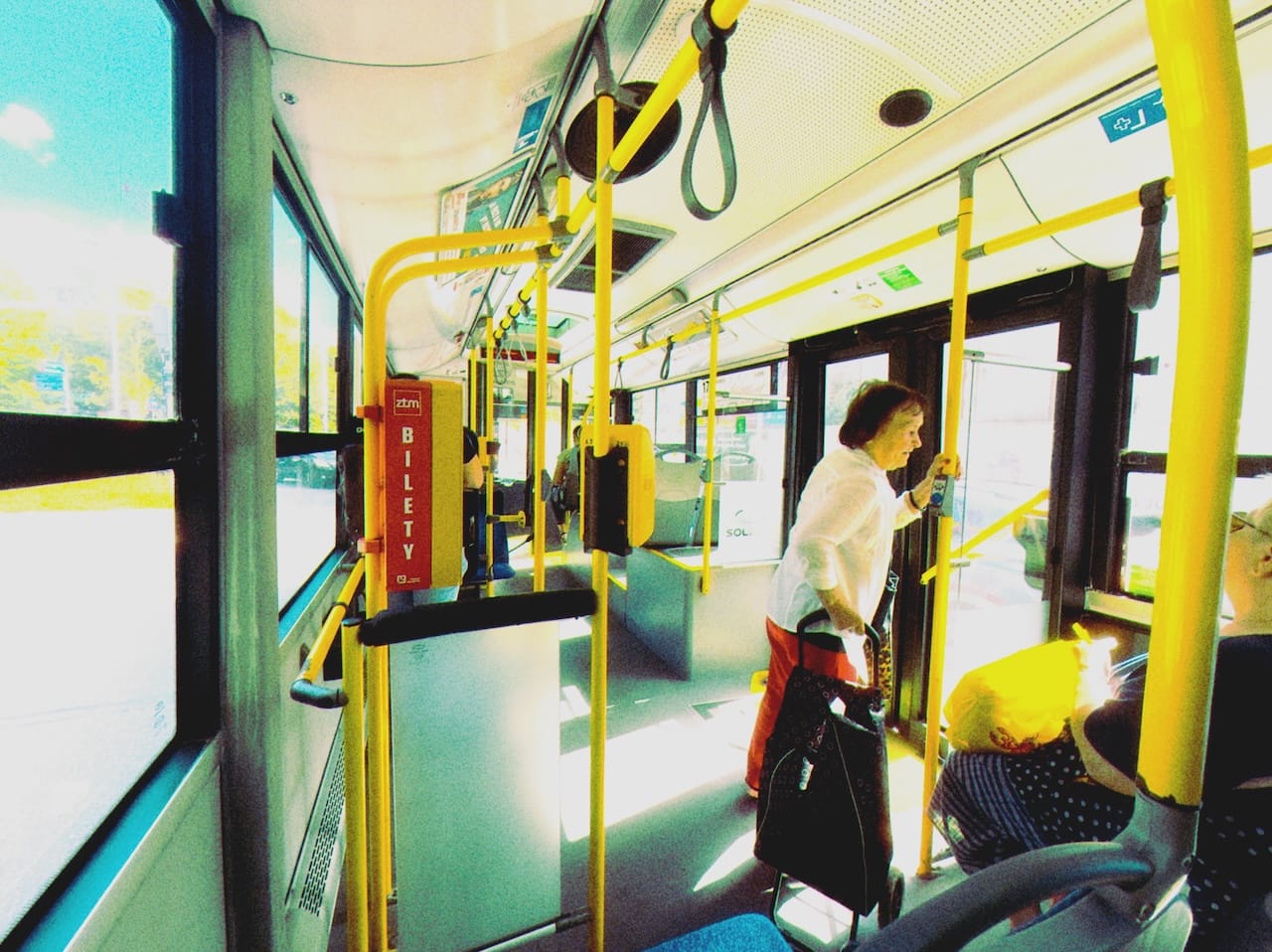
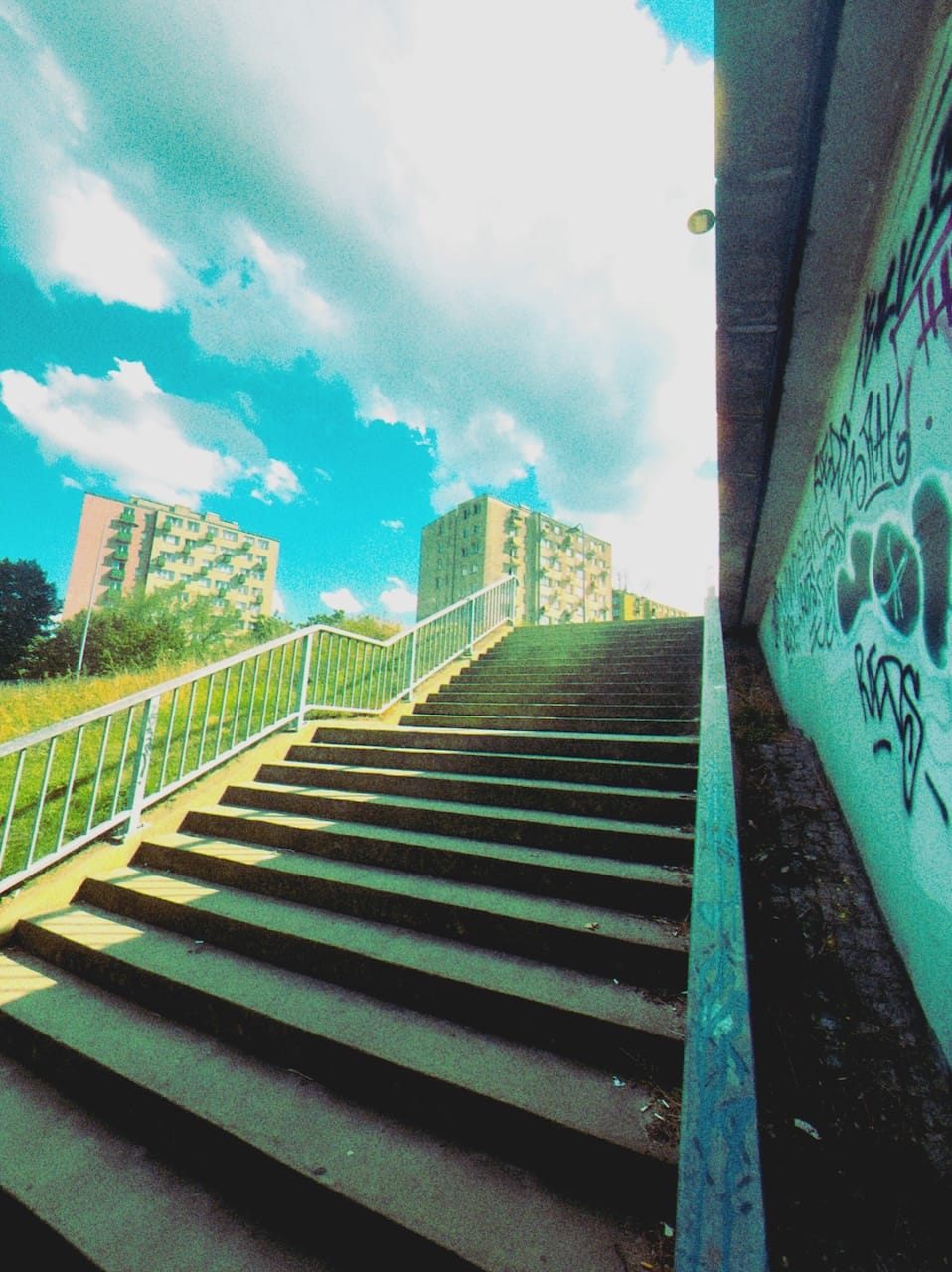
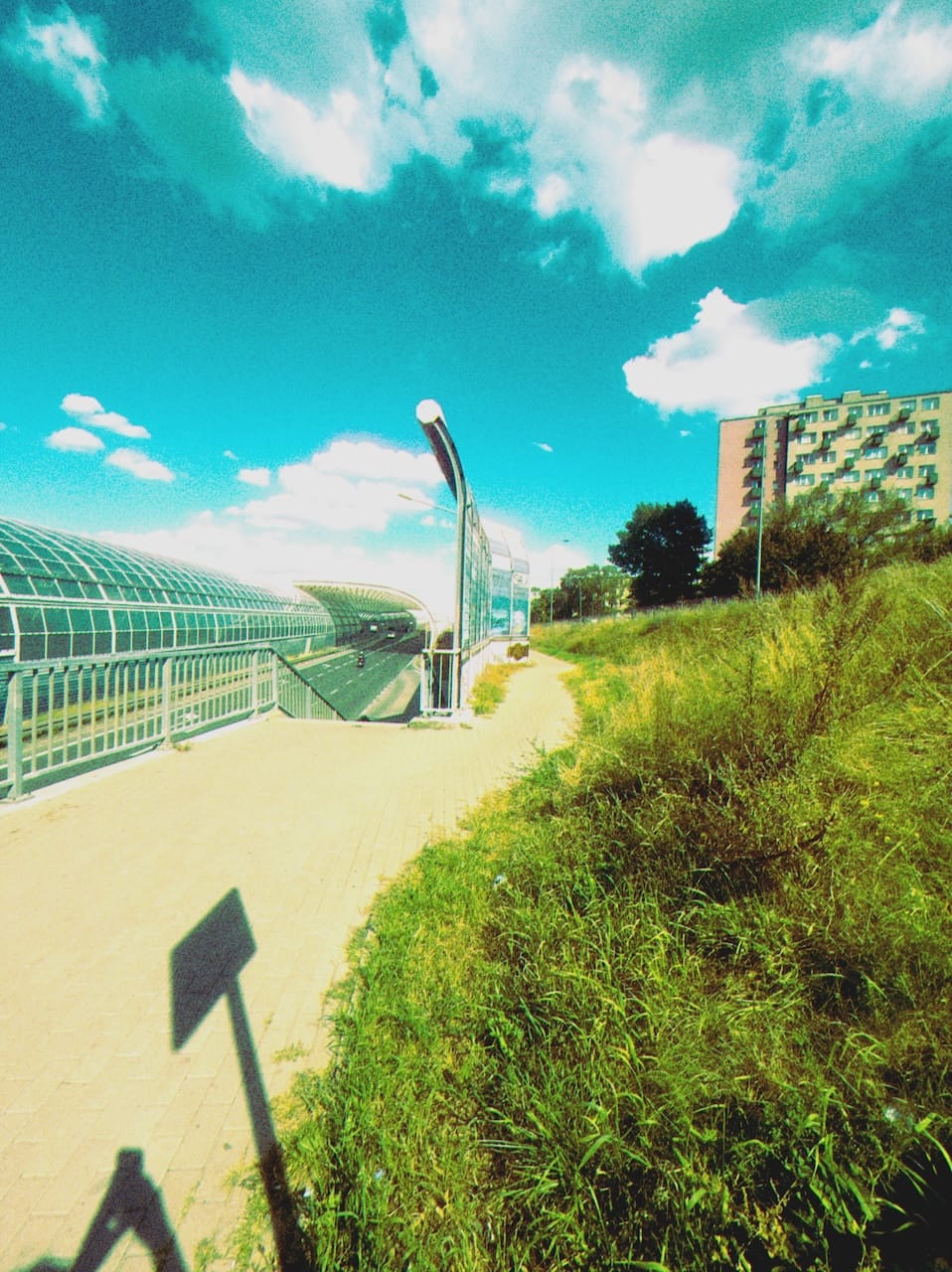
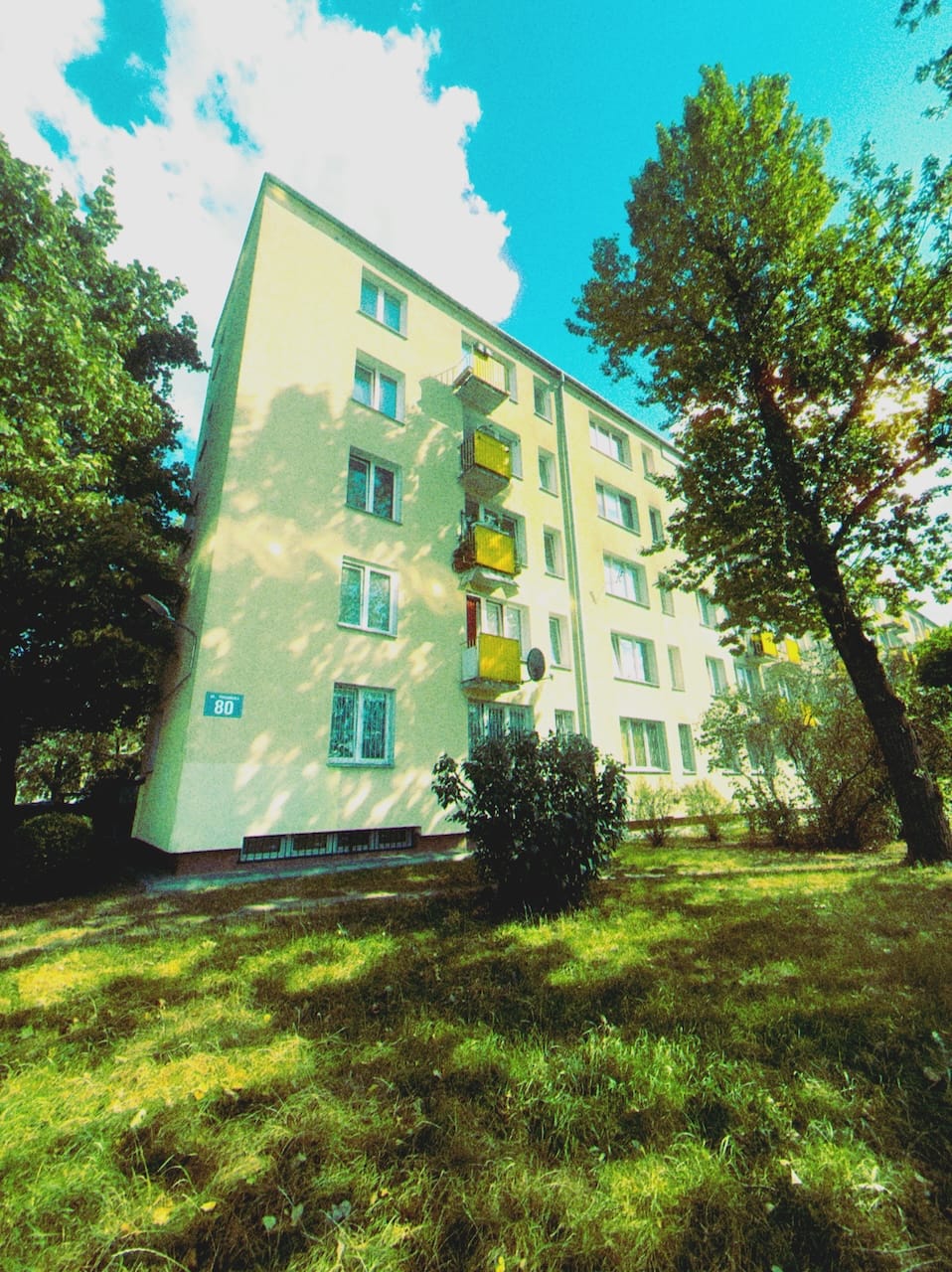
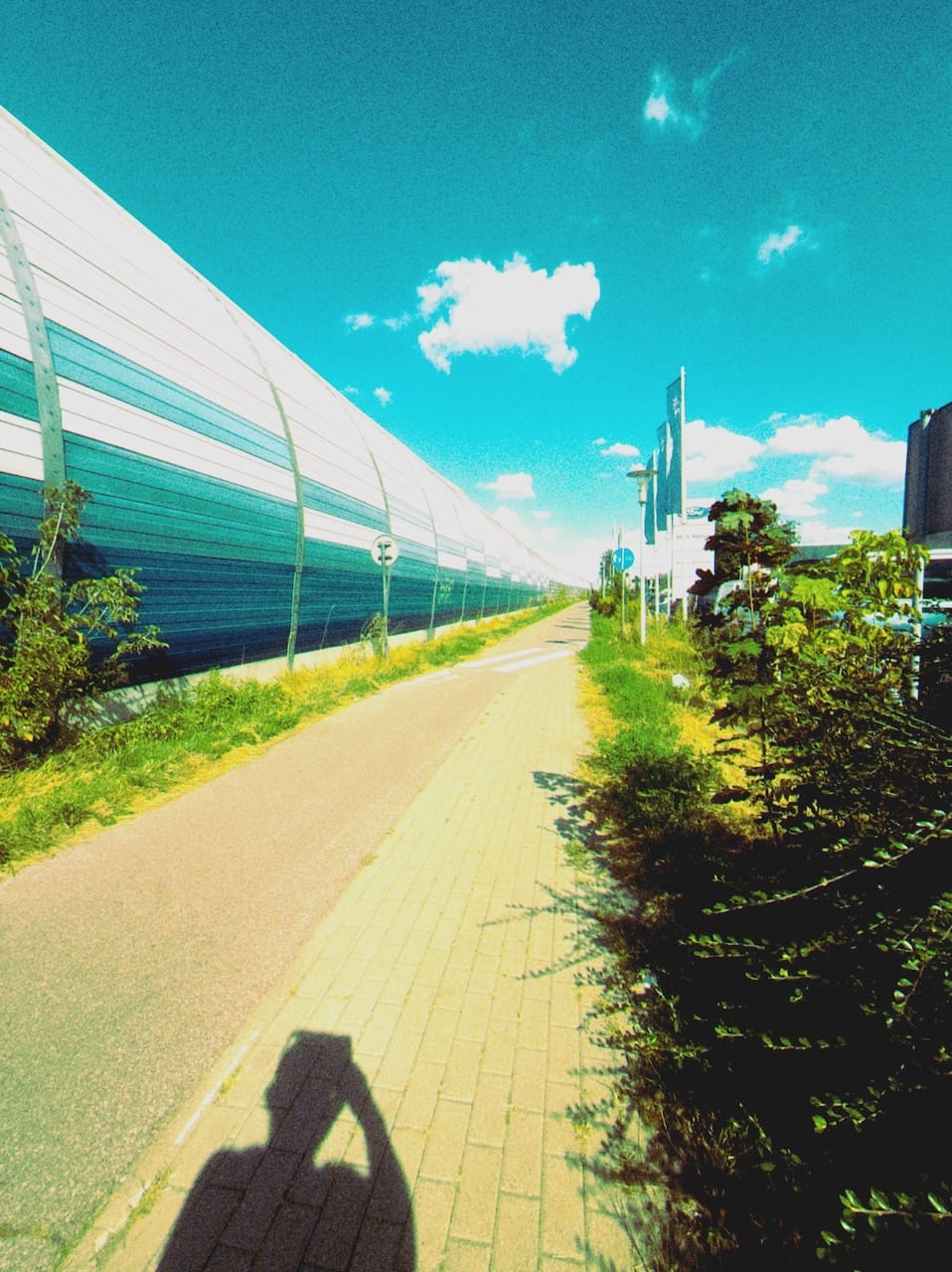
Walking to Toruńska to start the canal section.
The Architecture of Stillness
Walking along the canal, you realise how rarely cities offer genuine solitude. This isn't the manufactured tranquility of a park, with its designed vistas and intended recreational use. This is something more honest - a space that exists for purely functional reasons but accidentally provides something the soul needs: a place to think while moving, to follow water's ancient logic through a landscape of apartments and infrastructure.
The canal is remarkably self-contained. Its ivy-covered concrete banks create clear boundaries between the everyday chaos of neighbourhood life and this linear world of moving water and reflected sky. Cars pass on nearby streets, people go about their daily business in the housing blocks that line its path, but the canal maintains its own tempo, its own sense of purpose that feels separate from the city's urgency.
This containment creates an odd intimacy. You're walking through the heart of Warsaw, yet somehow removed from it - like following a secret passage that runs beneath the city's conscious attention.
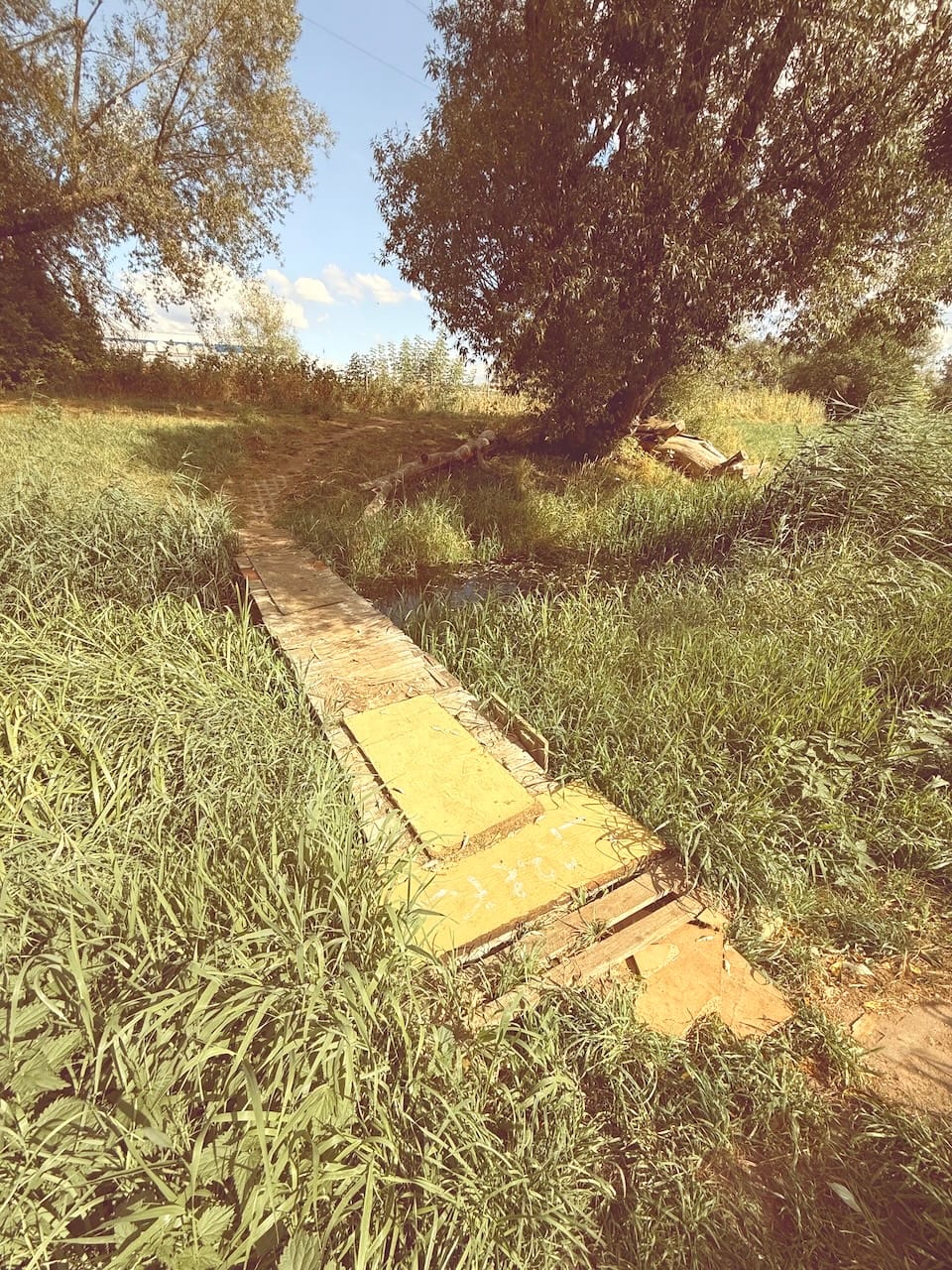
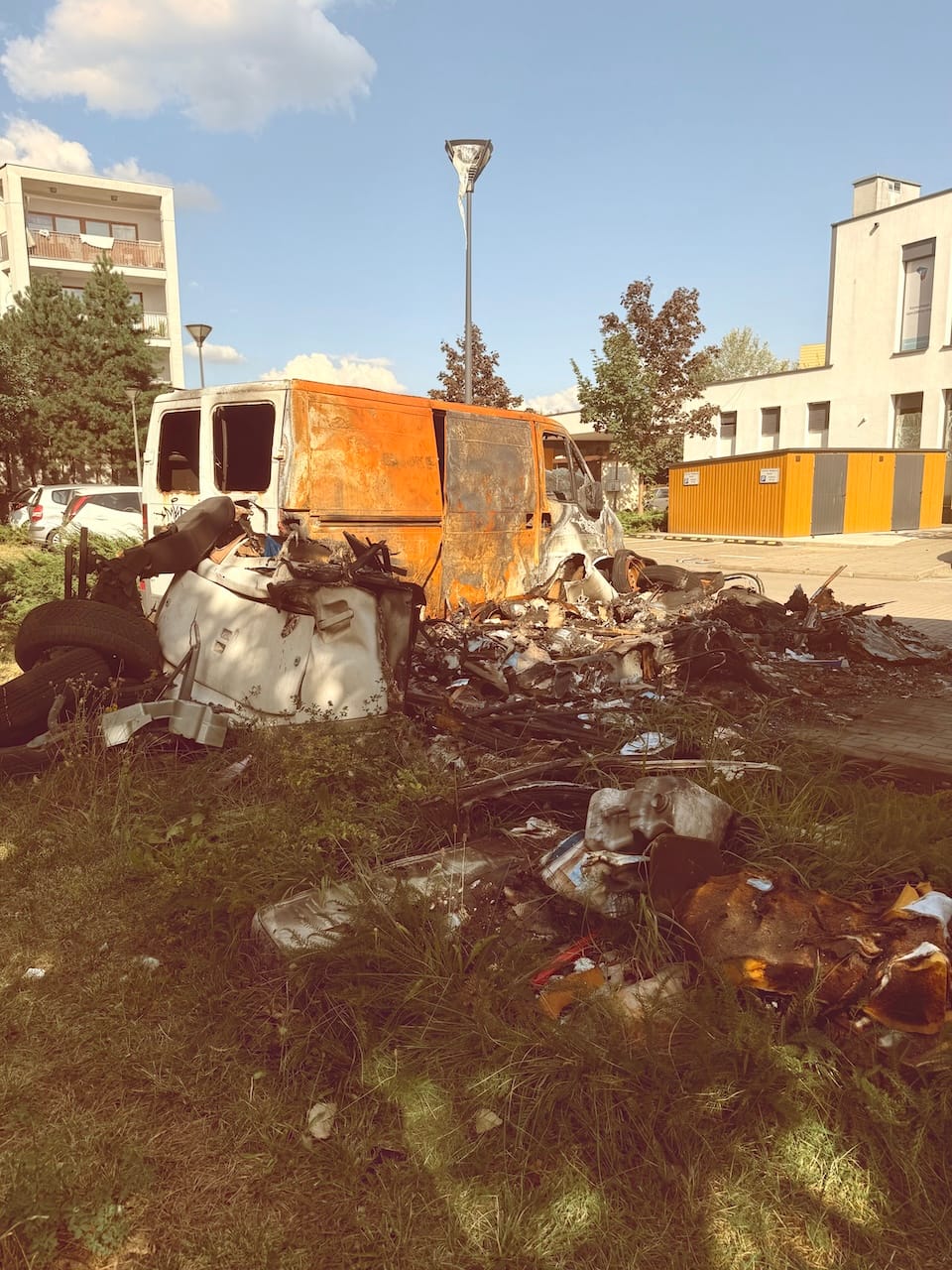
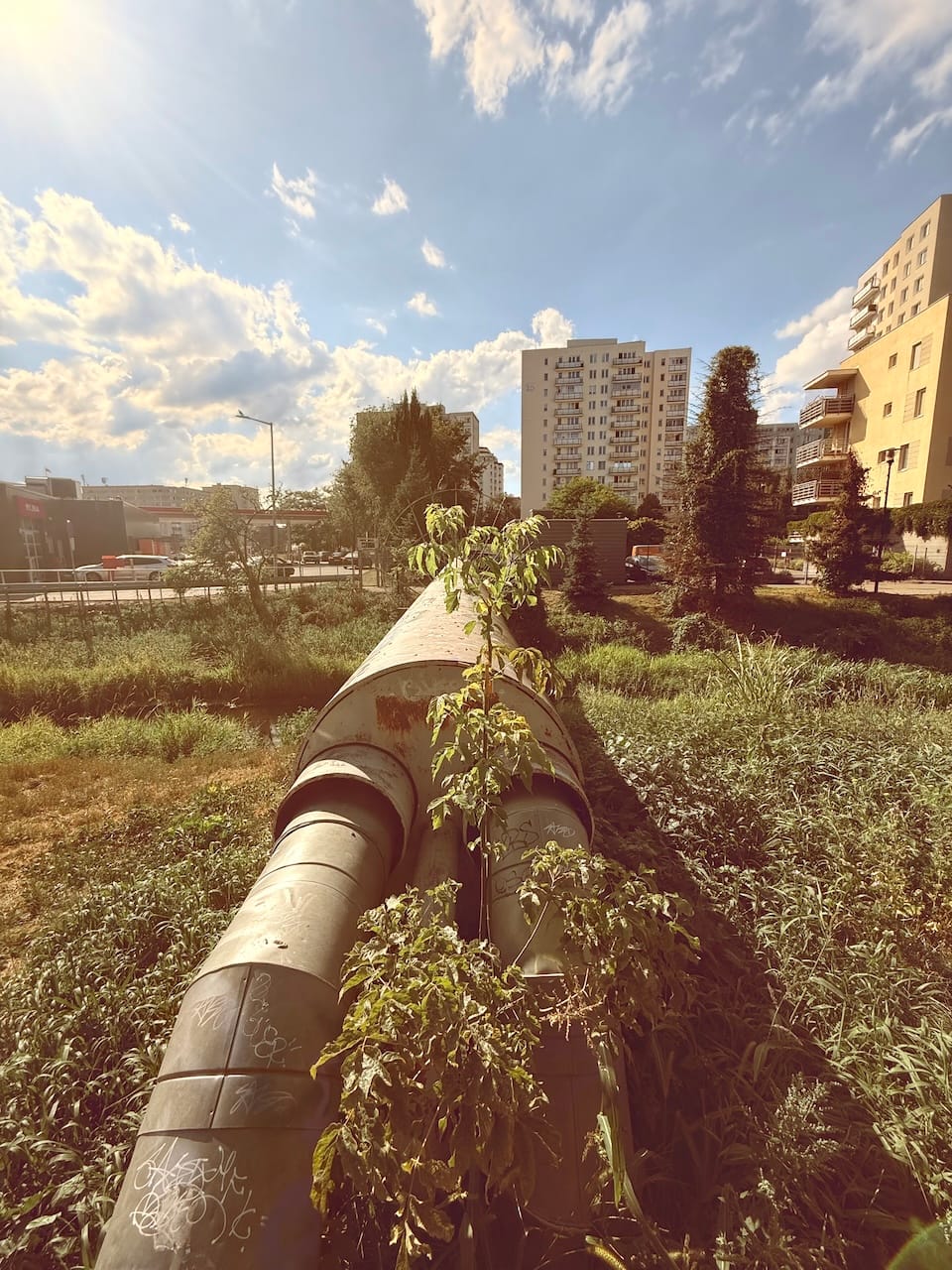
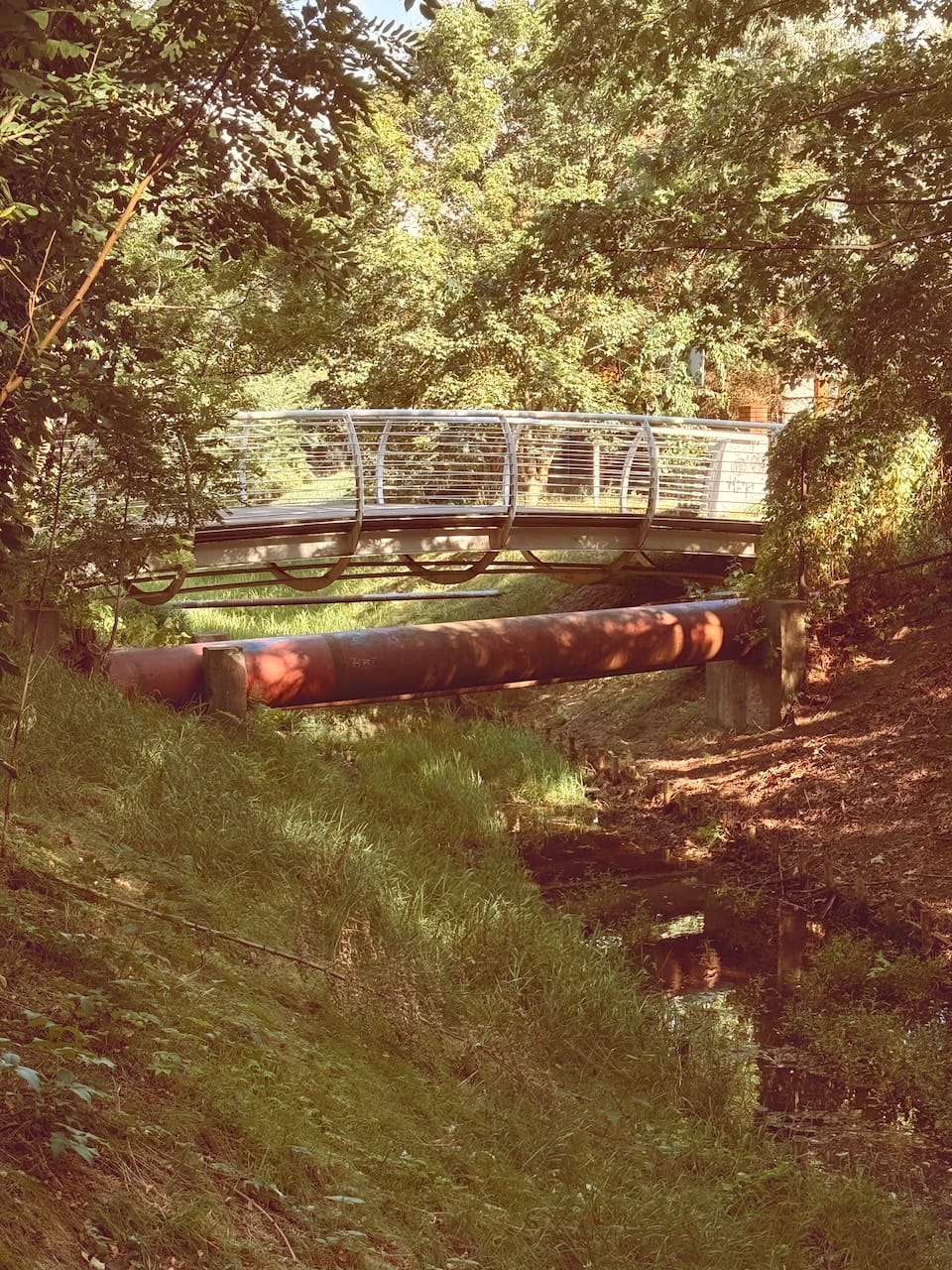
Targowek
The Silence Between
What strikes you most is not what's there, but what's absent. The canal doesn't bustle with life in the expected "urban photography" way. There aren't clusters of people socialising, children playing, vendors selling, or the typical human drama that fills most city spaces. Instead, there's a different kind of presence - the presence of space itself, of water moving with quiet determination, of concrete aging gracefully under decades of weather.
This emptiness isn't neglect; it's purpose. The canal serves its function so well that it doesn't need to announce itself.
It simply exists, doing its job of managing water flow while accidentally providing something harder to quantify: a corridor for contemplation, a place where the city's relentless energy can pause and recalibrate.
The few people you do encounter seem to understand this instinctively. They walk here not for destination but for the walking itself, for the rare urban experience of following water that has somewhere definite to go.
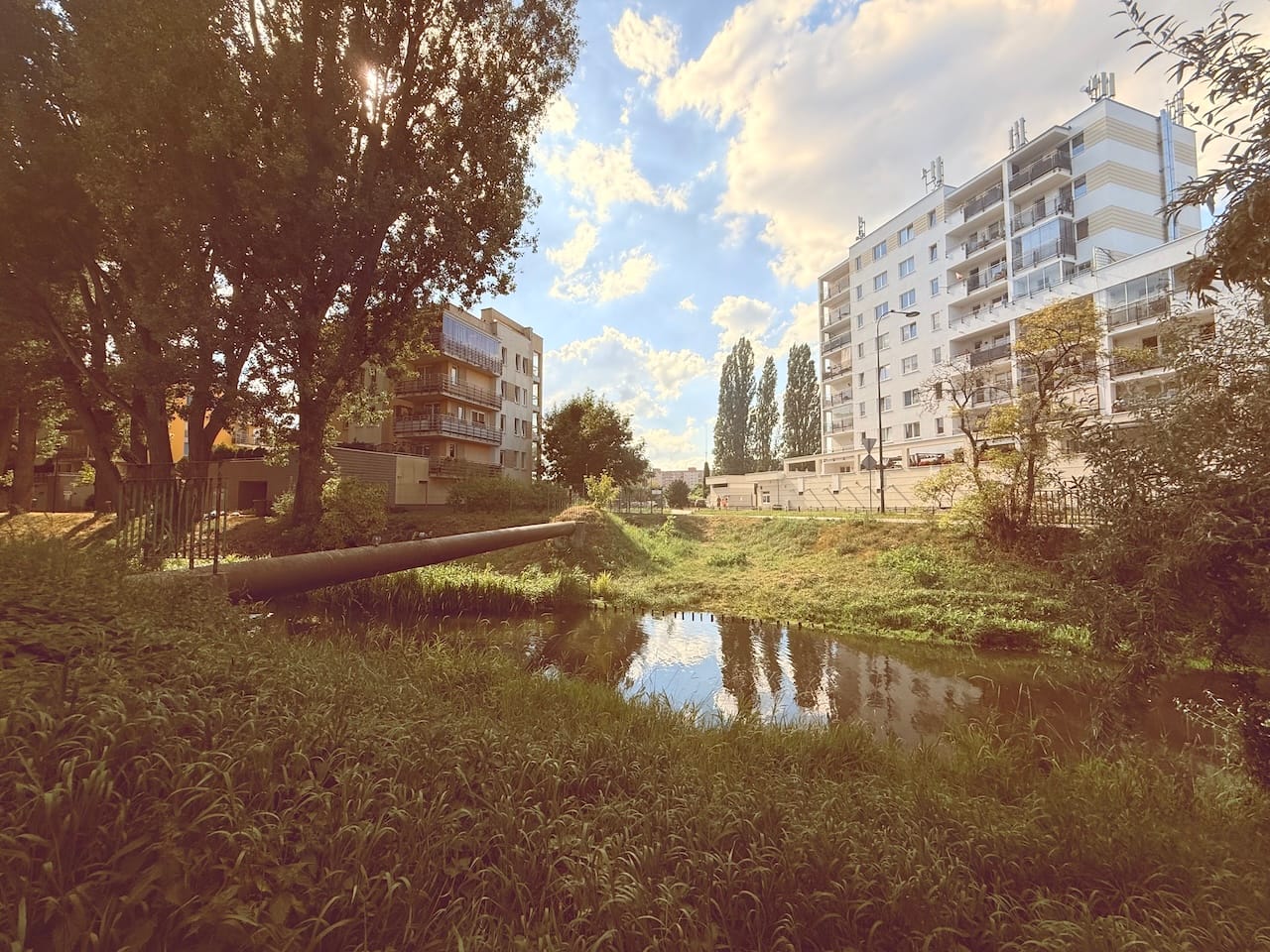
Temporal Meditation
The canal carries more than water - it carries time at a different pace. While the city around it accelerates and multitasks and optimises, the canal maintains the steady rhythm of engineered flow. Built during an era when Warsaw was rebuilding itself according to socialist ideals of rational urban planning, it represents a particular moment's confidence in large-scale solutions.
But forty years later, what emerges isn't ideology but something more fundamental: the human need for linear movement, for following something that has clear direction and purpose. The canal provides what the city's grid of streets cannot - a single thread to follow, a narrative path that unfolds gradually rather than demanding constant navigation decisions.
This is where photography becomes meditation rather than documentation. The images aren't about capturing dramatic moments or revealing hidden activities. They're about witnessing the quiet persistence of infrastructure that works so well it becomes nearly invisible, creating spaces for contemplation that no one planned for.

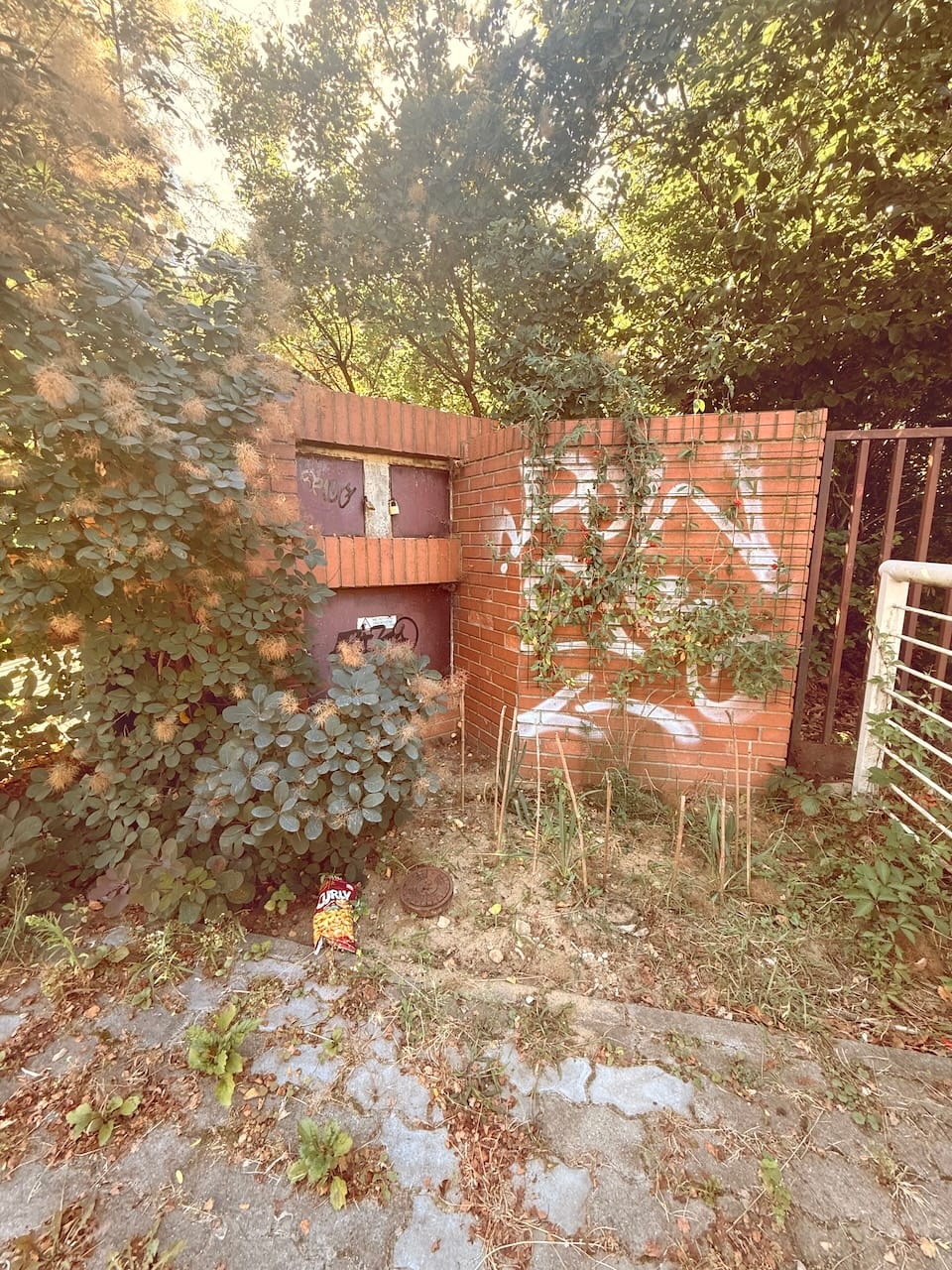

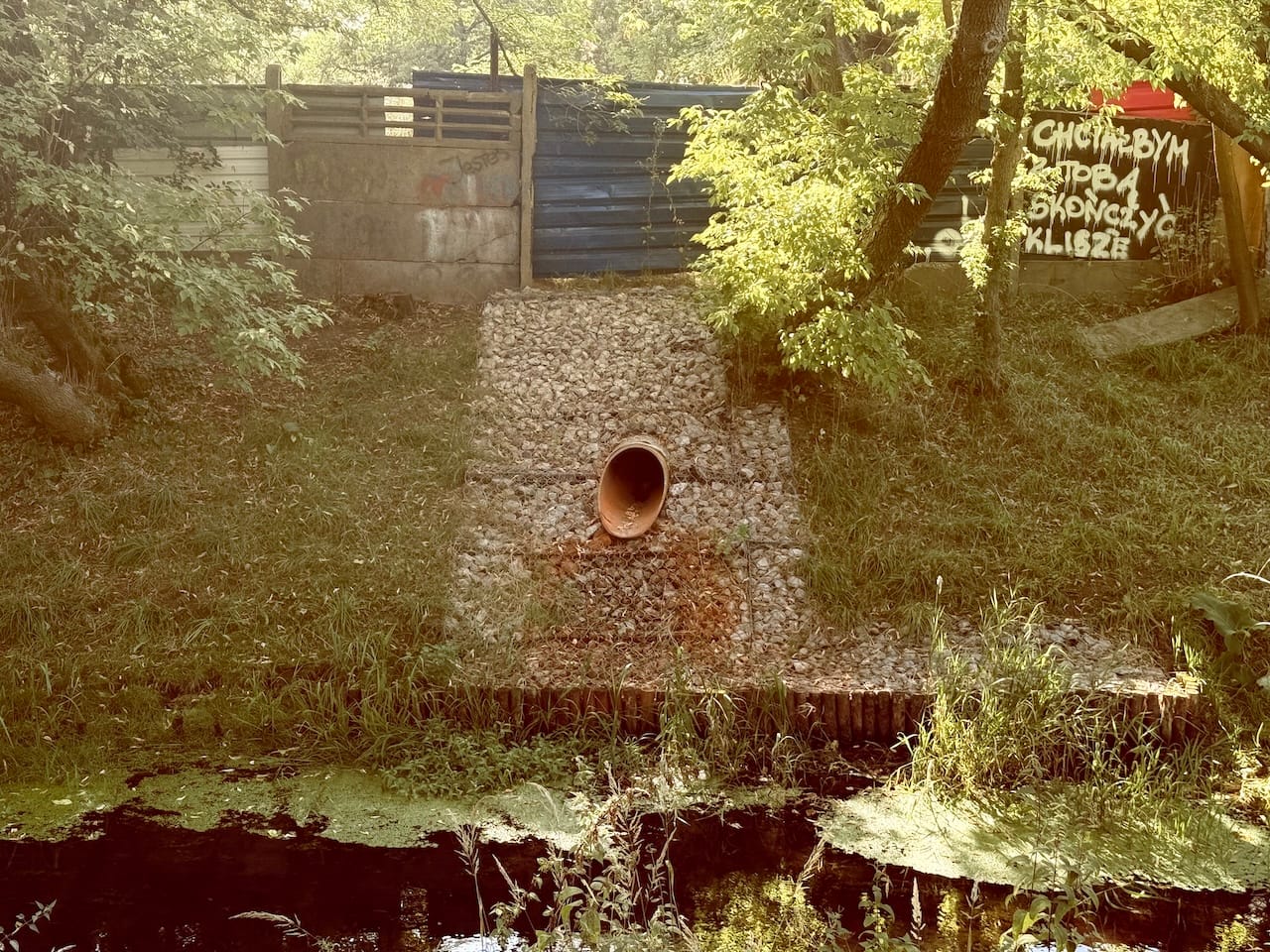

Targowek
The Oasis Paradox
Here's the beautiful contradiction: this most artificial of waterways - concrete-channeled, engineering-designed, utterly functional - creates one of the most natural experiences available in the urban core. Following its path, you slip into the ancient human rhythm of walking alongside flowing water, even though both the water's path and your own have been determined by municipal planners decades ago.
The canal succeeds as an oasis precisely because it doesn't try to be one. It's not overly decorated or landscaped or optimised for human enjoyment. It simply does its job of moving water efficiently through the city, and in doing so creates something unexpectedly valuable: a place where the city's noise fades to background and you can hear your own thoughts again.

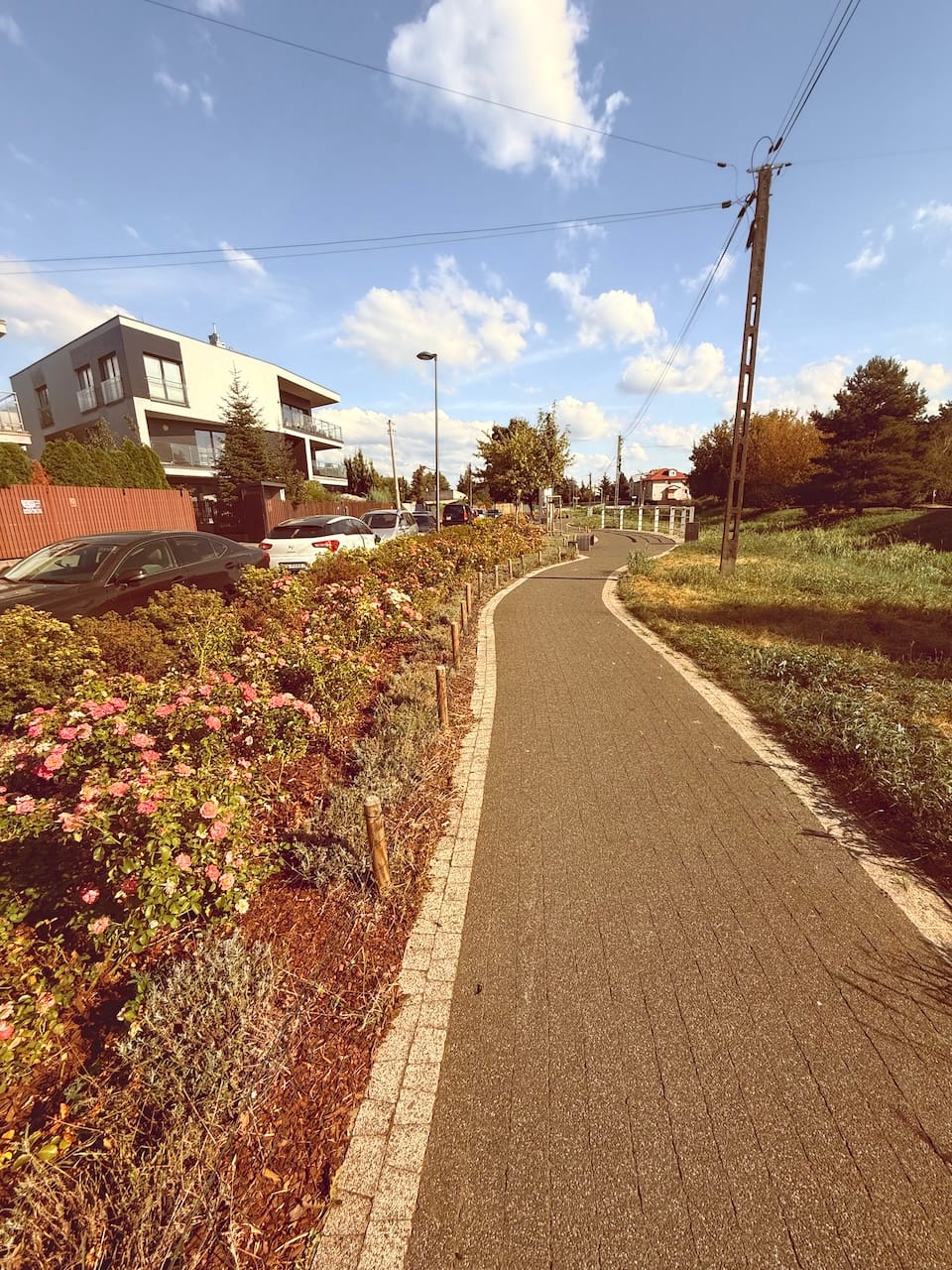

Targowek
Field Notes from Tomorrow's Return
The photographs I captured on this first half of the journey don't look like typical urban exploration images. There are no dramatic contrasts or bustling street scenes or moments of human interaction. Instead, there's something quieter: the way afternoon light creates geometric patterns on concrete surfaces, the precise line where water meets engineered bank, the subtle variations in how vegetation claims the spaces between intention and maintenance.
These images won't compete with dynamic street photography or architectural monumentalism. But they might capture something more necessary: evidence of spaces where a city allows itself to breathe, where function creates its own form of beauty through the simple act of working well.
I'll return another time to complete the canal's story, to follow its full length and see where this urban oasis leads. Sometimes the most important discoveries happen not through dramatic revelation but through patient attention to what's already there, quietly doing its job, creating spaces for reflection in a world that rarely pauses long enough to reflect.
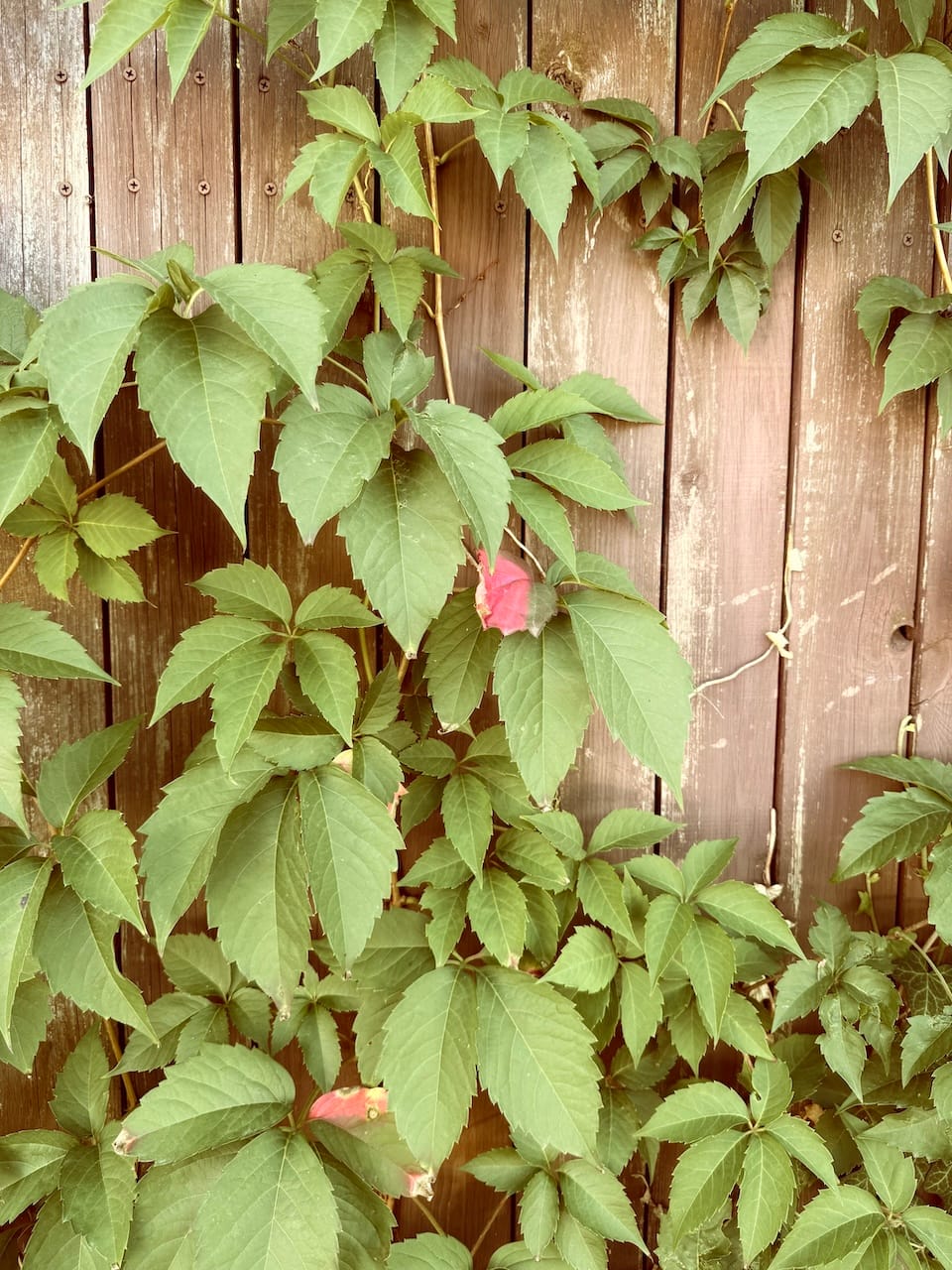
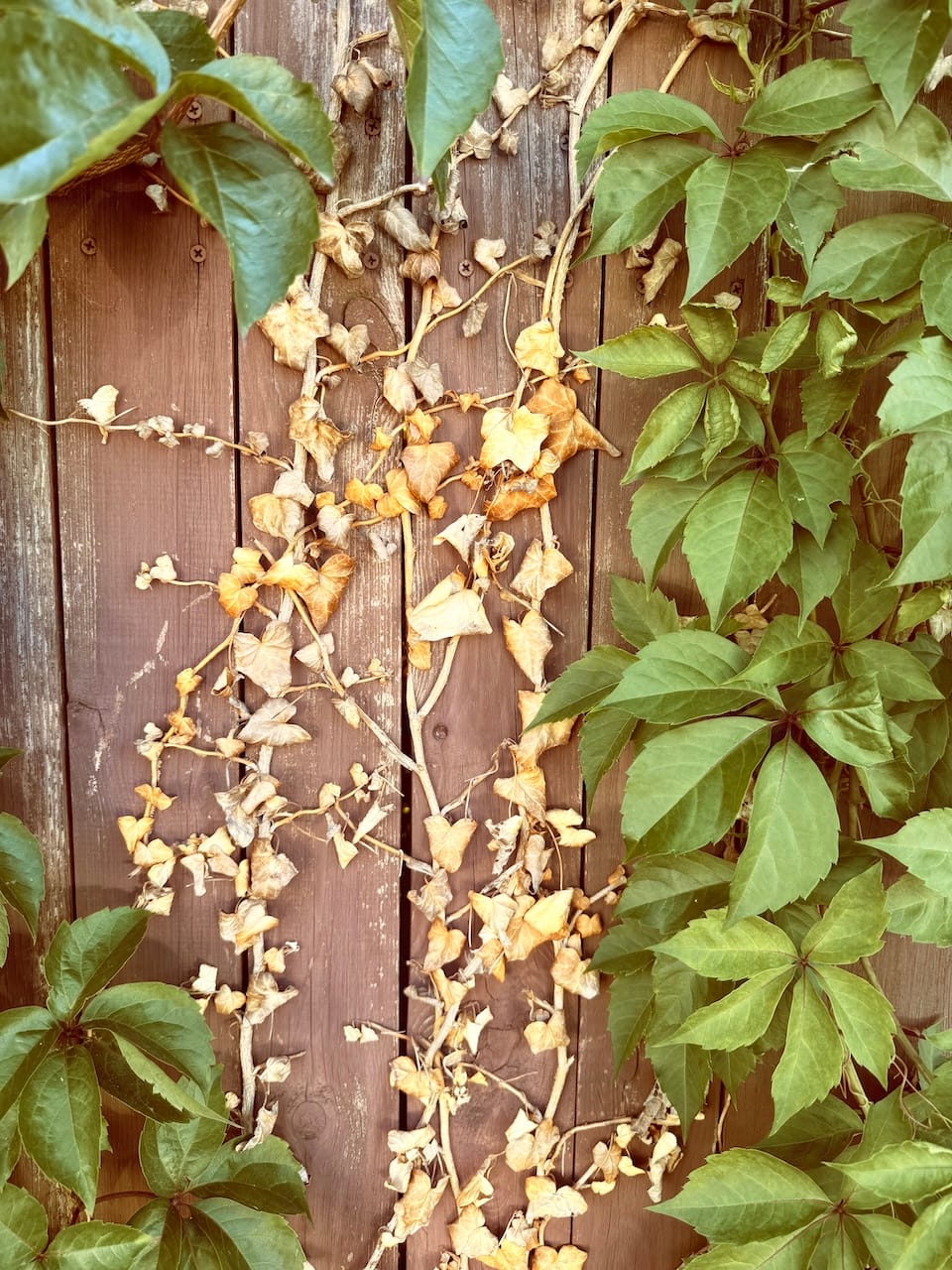
Targowek
The Canal's Gift
What Kanał Bródnowski offers isn't spectacle - it's something rarer in urban life: the gift of sustained, linear attention. In a city that fragments focus and demands constant decision-making, the canal provides what the mind sometimes desperately needs: a single path to follow, water to walk beside, and the particular quiet that comes from infrastructure so well-designed it creates peace as a byproduct.
The photographs I'm making along this walk aren't trying to make the canal into something it's not. They're attempts to document what it actually is: proof that cities can accidentally create sanctuaries, that the most functional spaces sometimes offer the most human experiences, and that oases can emerge from the most unlikely materials - concrete, water, and the simple decision to follow where they lead.
This exploration continues another time with the canal's completion. Sometimes the best urban discoveries happen not in a single dramatic moment, but in the patient act of following water to see where it wants to take you.
Route
